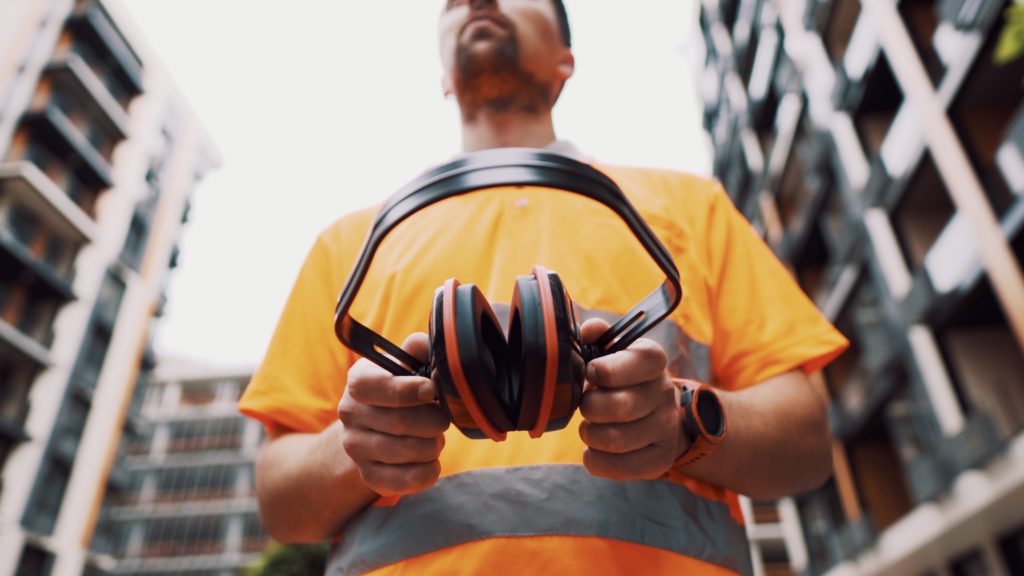TIM TURNEY, GLOBAL MARKETING MANAGER AT OCCUPATIONAL HYGIENE AND ENVIRONMENTAL COMPANY CASELLA, SHARES HIS EXPERT ADVICE ON PREVENTING HEARING LOSS IN THE RAIL SECTOR
Noise-induced hearing loss (NIHL) is preventable, but the effects are permanent, resulting in life-changing injuries that can seriously impair a worker’s quality of life.
The Control of Noise at Work Regulations follow European Union Directives to ensure that workers’ hearing is protected from excessive noise. The level at which employers must provide hearing protection and hearing protection zones is compulsory at 85dB(A) (daily or weekly average exposure) and the level at which employers must assess the risk to workers’ health and provide them with information and training and access to PPE is 80dB(A). Noise levels between 80-85 dB(A) are comparable to the sound of heavy traffic or a noisy restaurant. Employers must always remember hearing protection is a first-aid measure or the last resort. It’s key to control noise at the source to as low as reasonably practicable as the starting point for noise safety.
Noise monitoring
Railway workers engaged with track maintenance are at risk of experiencing significant hearing loss due to frequent exposure to very loud noises in repair and construction. Research published by the British Medical Journal has found that some railway workers have a significant hearing loss of ˜5dB caused by work-related noise1. Hearing damage can make workers vulnerable to other workplace risks should it limit their ability to be aware of their surroundings and identify hazards such as moving trains.


Noise monitoring can identify problem areas and ensure employers adhere to health and safety regulations. However, professionals undertaking the monitoring should be trained and prepared sufficiently with the right equipment as minor errors in noise level estimates can lead to major errors in exposure calculations. Inaccurate estimates can risk worker health, employer prosecution, and unnecessary expenses undertaking exposure-limiting measures based on inaccurate data.
Two pieces of equipment used for the assessment are the sound level meter, primarily designed as a hand-held device used by an operator, and the noise dosimeter, which a staff member wears for their working shift. A sound level meter is an ideal solution for measuring the overall noise level of a task, piece of machinery or area. On the other hand, dosimeters are best for personal noise measurements where workers are mobile, or it is difficult or unsafe to get close to employees with a sound-level meter because dosimeters are smaller and body-mounted. For example, a dosimeter would be ideal for workers exposed to many different noise levels and irregular working patterns.
Safety measures
If a risk assessment establishes that noise levels pose a risk to workers, personal hearing protection should be supplied immediately while other more permanent solutions are implemented. However, personal hearing protection should only be considered the primary solution when all other options have been exhausted as control of noise at the source is the ultimate priority. Other measures can reduce exposure by reducing the time a worker is exposed to loud noise, such as physically separating staff from the noisiest areas or rotating shifts to spread individual exposure.
Personal hearing protection
When selecting hearing protection equipment, employers should consider the relationship between hearing protection and other personal protective equipment (PPE). For example, an employee wearing prescription or safety glasses will not obtain an adequate fit from a standard earmuff, so plugs or semi-inserts may be more suitable. In working environments where hard hats are worn regularly, a hard hat with built-in hearing defenders should be considered. Worker responsibility also plays a crucial role. Removing PPE, even for short periods, has a significant effect on exposure. It’s therefore crucial that hearing protection is comfortable.

Employers must also understand the process of reducing sound, known as attenuation. If a protector with too little attenuation is used, then employees will not receive enough protection. However, too much noise reduction can create feelings of isolation, and an employee may need to remove their PPE to communicate. In addition, over-attenuation can cut out safety warnings such as fire alarms, resulting in further risks to workers. Generally, businesses can avoid over-protecting workers by ensuring the level of exposure is not reduced to a level below 75dB(A).
Keep your workforce safe
Employers in the rail sector have a responsibility to prevent damage to their workers’ health. There are also measures that can be taken by workers to ensure that they are cooperating with their employers for the sake of their own health. Wearing PPE and learning about the importance of noise monitoring can both help in reducing the rate of NIHL.
For more information about its noise monitoring solutions visit www.casellasolutions.com/uk/en.html
Tim Turney graduated as an engineer from Queen Mary and Westfield in London. Since starting at Casella in 1998, Tim has been involved in the acoustics and air sampling industry, specializing in measurement and instrumentation technologies.

